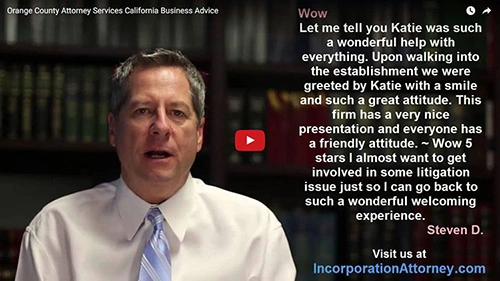More About Professional Corporations
By renting, construction companies offer payment to licensed individuals for their title but do not officially or permanently employ them. Instead, they are only RME or RMO in writing.
Some construction businesses get away with it, but once caught, the CSLB will hold the RME or RMO accountable and take disciplinary action. Why do some construction companies sidestep all the legal processes and risk their business? Are the application procedures for a construction license grueling and expensive?
This article offers valuable information regarding RMO and RME for your construction company in California to help you get a license the legal way.
What is a Responsible Managing Employee (RME)?
A Responsible Managing Employee or RME is a licensed individual who is permanently employed by a construction company. The California CSLB issues the RMEs’ license to qualify for the company that they work for.
Based on Contractor State License Board, Rules & Regulations, Chapter 13, Article 2, an RME must be active employees engaged in the construction company’s day-to-day operations for not less than 32 hours per week or 80 percent of the total business operating hours per week, whichever is less.
Can you be an RME and a company owner at the same time?
RMEs can qualify for various business entities as salaried employees but they may not be a qualifier on any other active CSLB license. This means that if you are an RME, you are prohibited from having an active sole owner license. So, if you are permanently employed, you may not be able to perform other jobs on the side as a contractor using your company’s license.
However, an RME may act as a qualifier for more than one active license under the following conditions:
- There is common ownership of no less than 20% of each firm’s equity for which an RME acts as the qualifier.
- The additional firm is a subsidiary of, or a joint venture with, the first. The parent company must have a CSLB license.
- The majority of the partners or officers are the same for each firm whether it’s LLC, partnership, or corporation.
Meeting the above conditions gives RMEs or RMOs the privilege to have more than one active license. However, they can be the qualifier for up to only three firms within a year. If the qualifier does not meet these conditions, only one license can remain active. This means that if an individual decides to be an RME or RMO, they must deactivate their personal license.
RME vs RMO: What are the Differences?
The CLSB requires a qualifier, who may or may not be the business owner, for each classification on every license issued. Note that the terms “qualifying individual” and “qualifier” are used interchangeably. Qualifiers, also known as RME or RMO, are bona fide employees or officers of a construction company. They have similarities when it comes to licensing conditions, but they differ in responsibilities.
RME for a Construction Company in California – Job Descriptions
A Responsible Managing Employee is directly involved in the daily operations, which may include the following but is not limited to:
- Overall servicing
- Maintenance
- Installations
- Planning
- Selling
The RMEs act as the qualifier for a construction company’s license who has proven experience in the same field as the company they work for.
RMO Job Description for California Construction Company
A Responsible Managing Officer is an individual who is permanently employed by a company. Like RMEs, RMOs must be actively engaged in the company’s daily operations for at least 32 hours per week or 80 percent of the total work hours per week. As RMOs, they perform the following:
- Directly controls or supervises the company’s overall construction activities
- Directly supervises construction job sites
- Secures full compliance with California’s rules and regulations on constructions
- Ensures full compliance with the state’s laws on building and public health and safety
- Makes technical and administrative decisions
How to Obtain a Contractor’s License for a Corporation?
In obtaining a contractor’s license, a corporation needs a “qualifying individual” or “qualifier”. These terms are used interchangeably. Qualifiers must meet the Board’s experience and examination requirements to obtain a license. Corporations applying for a contractor’s license must also complete the following requirements when applying:
Know all the requirements before applying
Before submitting your application for a contractor’s license, get information on the rules and regulations for contractors. Are you exempt? What is your particular industry and what are the limitations and conditions? What are the penalties?
Fill out the application form
Visit the CSLB website for the contractor license application form. Remember that you can apply for only one license classification at a time. If you plan to apply for multiple licenses, you must wait for the initial license to be issued before applying again.
Fill out the Certification of Work Experience form
To confirm your work experience, you can download form 13A-11. Make sure to submit a complete work history as you can no longer add to it later. In addition to this, you must also submit Project List form 13A-64 if your work experience is from owner-builder work.
Submission of application
After completing all documentation, submit your application to CSLB Headquarters and pay the $330 processing fee. On the envelope, make sure to include your return address.
Take the examination
Be sure to study before the examination. Download the CSLB provides study guides through its website. Individuals with difficulty understanding English can get a translator, who will also be approved by the Board.
License issuance
When you pass the exam, CSLB will notify you about the fee and bond at the testing site. You will be given a list of required documents that you need to submit. The initial licensing fee is $200.
Are You Looking to Hire an RME for a Construction Company in California the Legal Way? A Professional Can Help You Best
Whether you are new to the construction business or a seasoned company owner, the legal issues involving RMO or RME for a construction company in California may still be confusing. Some business owners are discouraged from undergoing the tedious process, so they resort to renting one.
Renting an RME may save you some time and money but will create a bigger problem that warrants revocation of license, criminal charges with jail time of up to six months, and up to a $5,000 fine. This is a huge possibility if the CSLB uncovers the renting activity.
If you want to protect your business, going the legal route is risk-free. From a legal perspective, the process may be complicated and time-consuming but you can stay away from trouble and penalties. Work with an attorney who understands ownership, management, and incorporation rules surrounding professional construction corporations in California.
Incorporation Attorney’s seasoned business lawyers have extensive experience dealing with licenses and other incorporation issues. Give us a call today for more information.









